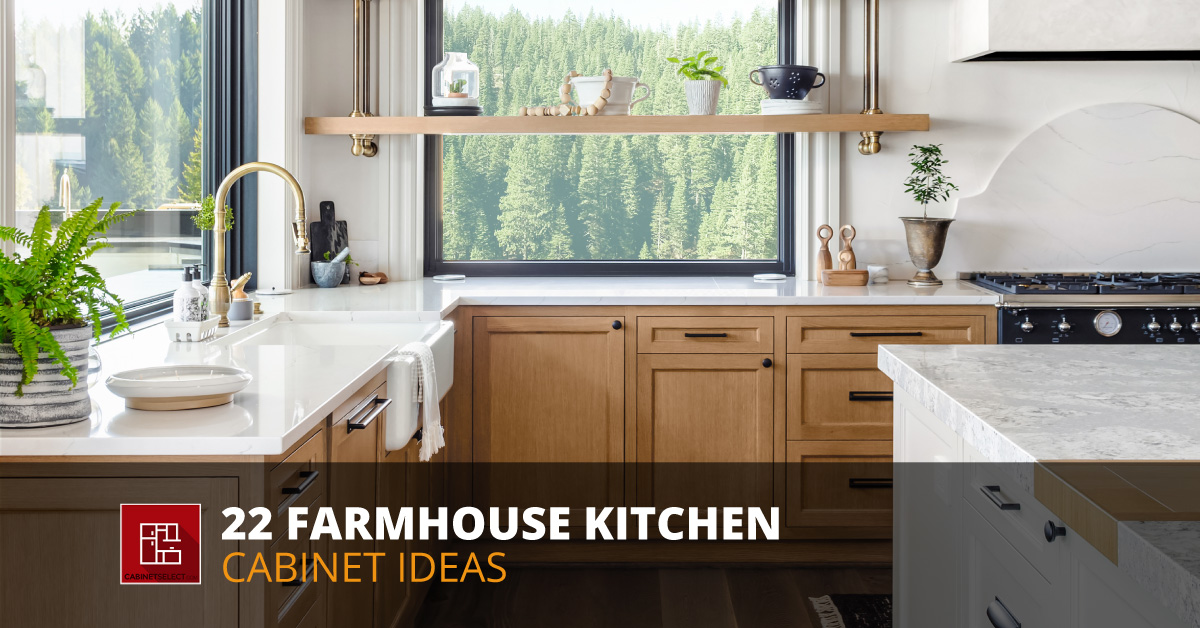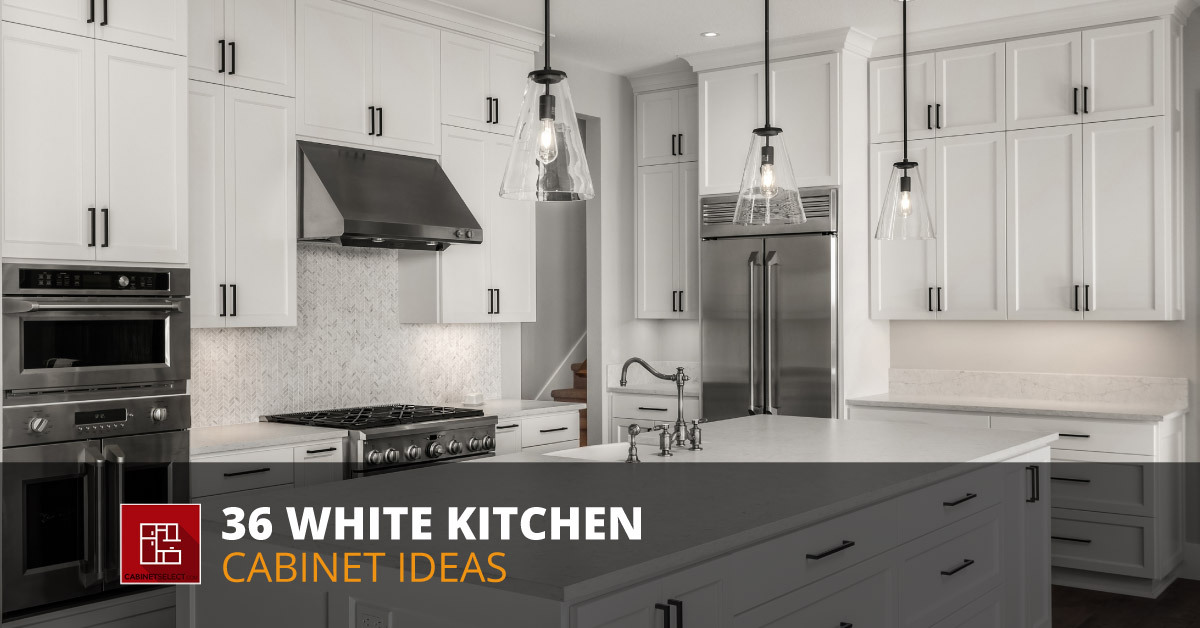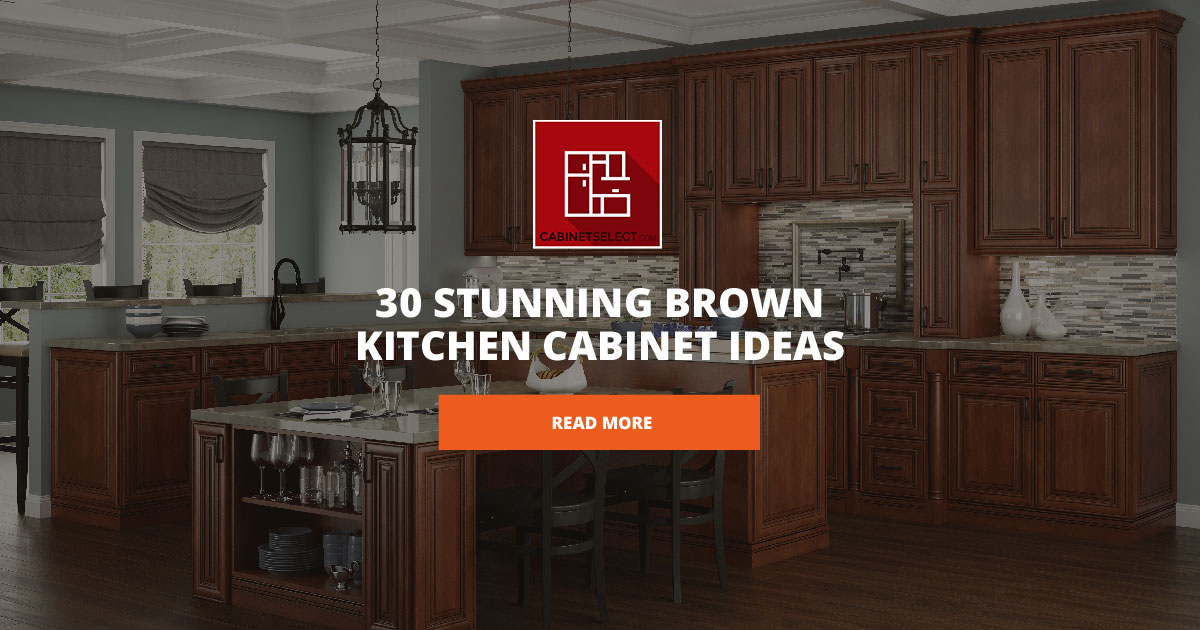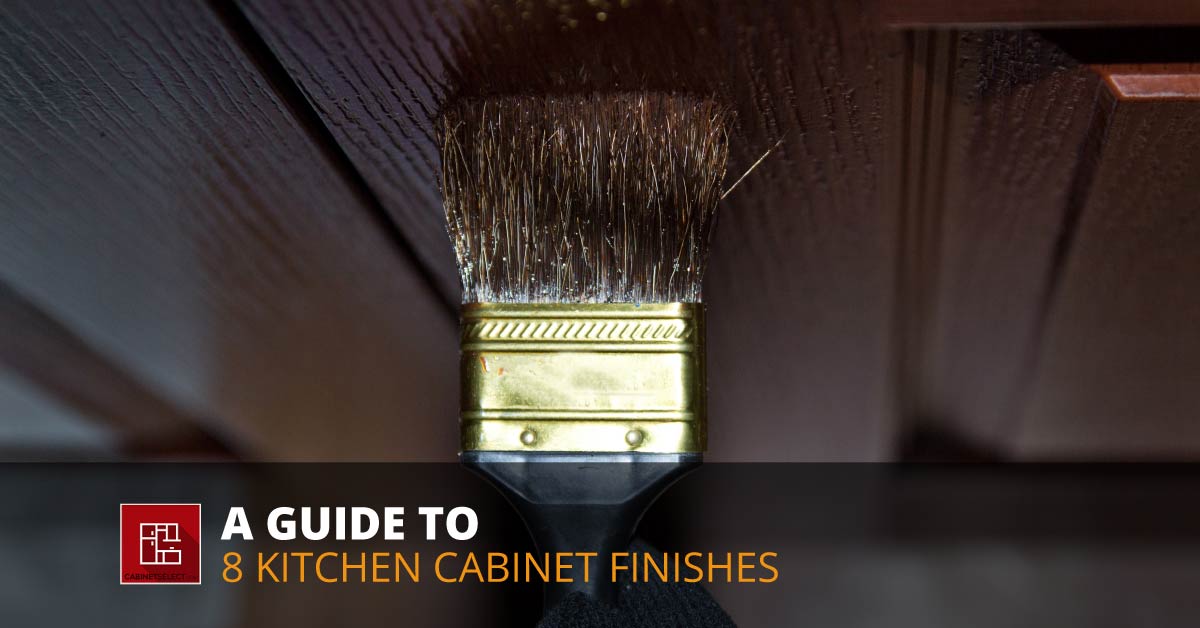
A Guide to the Top Kitchen Cabinet Finishes
Getting your kitchen to feel ‘just right’ is not easy. An essential part of the mix? The finish on your cabinets. Think of it as the final coat – paint, stain, or even laminate – brushed onto your cabinet surface. It’s pretty important stuff, dictating everything from the color and feel of your cabinets to how long they will last and how easy they are to care for.
Ready to dive in deeper? We have prepared a thorough guide about eight main types of kitchen cabinet finishes. We will share the good, the bad, and the best uses for each. We will also tackle some common questions people have about cabinet finishes and give you a head start on choosing the one that will make your kitchen shine.
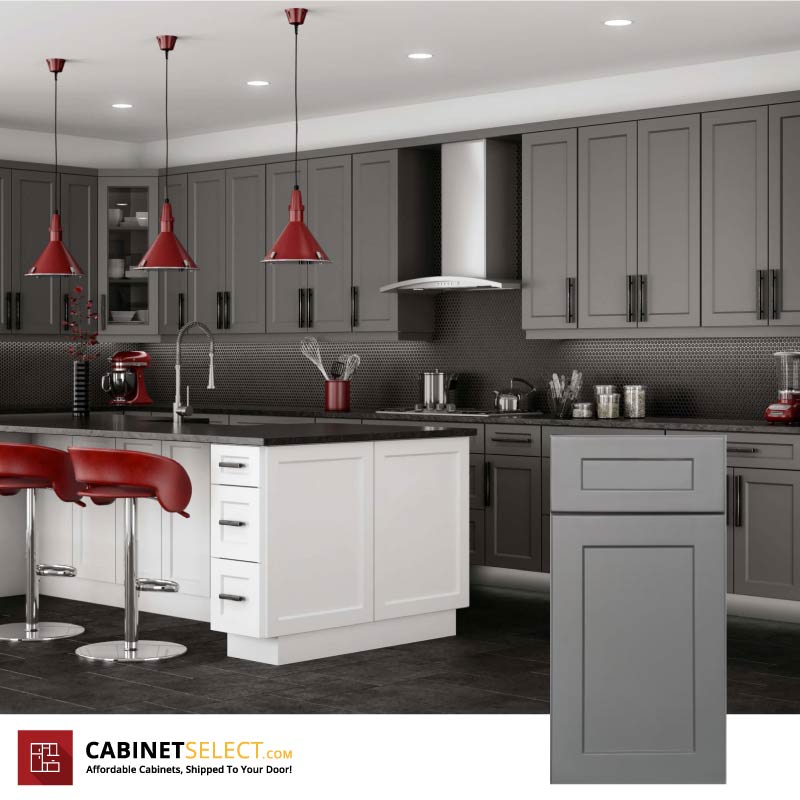
1. PAINTED FINISH
A favorite among many, the painted finish is quite the game-changer for kitchen cabinets. Here is how it works: you coat your cabinet surface with high-quality paint, usually after a good round of sanding and priming to prepare the surface. What’s spectacular about it is the variety It offers different levels of glossiness, including gloss, semi-gloss, and matte.
Pros:
- Paint finishes come in a variety of colors and styles for every kitchen style.
- They are easy to maintain because they are stain, scratch, and moisture-resistant.
- Cabinet flaws? What flaws? Painted finishes hide them well.
Cons:
- Paint finishes can slightly strain your wallet as they require more labor and materials.
- Regular use can lead to chipping, peeling, or color fading over time.
- Matching colors during touch-ups or repainting might be challenging.
Best Uses
If you are aiming for a sleek, modern, or color-infused kitchen, then the painted finish could be your best option. It ideally suits kitchens where cabinets take center stage with striking contrasts. Stick to classics like white, black, or gray for a timeless feel, or spice things up with vibrant hues like red, green, or turquoise if you are in pursuit of a more dynamic look. Check out our Shaker Cabinet Ranges especially in White and Grey colors with painted finish.
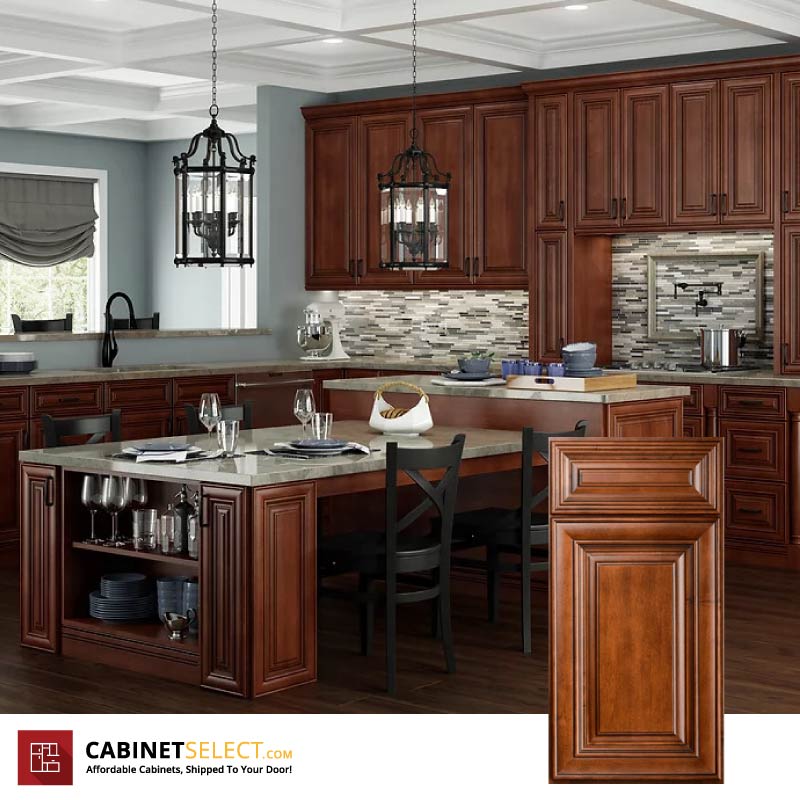
2. STAINED WOOD FINISH
A stained wood finish is a classic choice for kitchen cabinets that’s just as popular today. The process requires a stroke of stain over the natural wood surface after prepping with sanding and sealing. Light, medium, or dark shades – the options are varied for stained wood finishes like Greystone Shaker, Casselberry Saddle cabinets.
Pros:
- Stained wood finishes enhance the natural charm and textures of the wood for a rich, inviting look.
- They are wallet-friendly and easy to apply, needing less work and supplies compared to painted finishes.
- Impressively sturdy, these finishes resist fading, crackling, and bending.
Cons:
- The range you can achieve with stained wood finishes depends on the wood type since it does not change or mask its features.
- Cleaning can be a bit tedious because they might soak up stains, grime, or moisture.
- Results can be unpredictable as they might react differently to individual wood sections.
Best Uses
Stained wood finishes are the way to go for kitchens aiming for a traditional, rustic, or snug feel. It is ideal, too, for those who wish to accentuate the natural beauty of their wood cabinets. Light or medium stain shades can brighten up your space, while dark shades can lend a touch of drama or elegance.
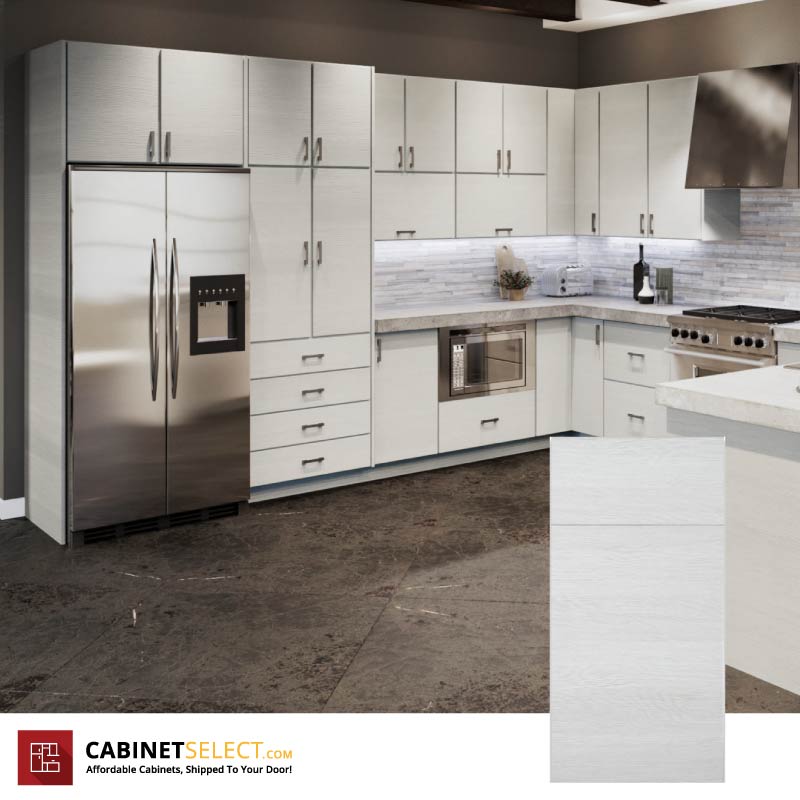
3. LAMINATE FINISH
A laminate finish is a synthetic option for kitchen cabinets. It involves applying a thin plastic or paper layer over the cabinet surface. It’s typically bonded using heat and pressure. Laminate finishes provide myriad patterns, colors, and textures like wood, metal, or marble.
Pros:
- Laminate finishes come in an array of options to suit all kitchen designs.
- They are cost-effective and simple to install, requiring less effort and materials than other finishes.
- Renowned for being long-lasting and low-maintenance, they stand strong against scratches, stains, and moisture.
Cons:
- These finishes can sometimes appear low-grade compared to natural finishes.
- In conditions of high heat or humidity, they might chip, peel, or bubble.
- Repairing or replacing is a hassle as it might not match the original pattern or shade.
Best Uses
Laminate finishes work great for kitchens aiming for a modern, minimalist, or budget-friendly aesthetic. They are also a hit in kitchens looking to experiment with different cabinet designs. Wood laminate finishes bring coziness, while metal or marble laminate finishes drive in sleek sophistication.
Looking For Cabinets For Your Next Project?
Let Us Help You Envision and Price out Your Kitchen or Bathroom Cabinets.Get Free Kitchen Design
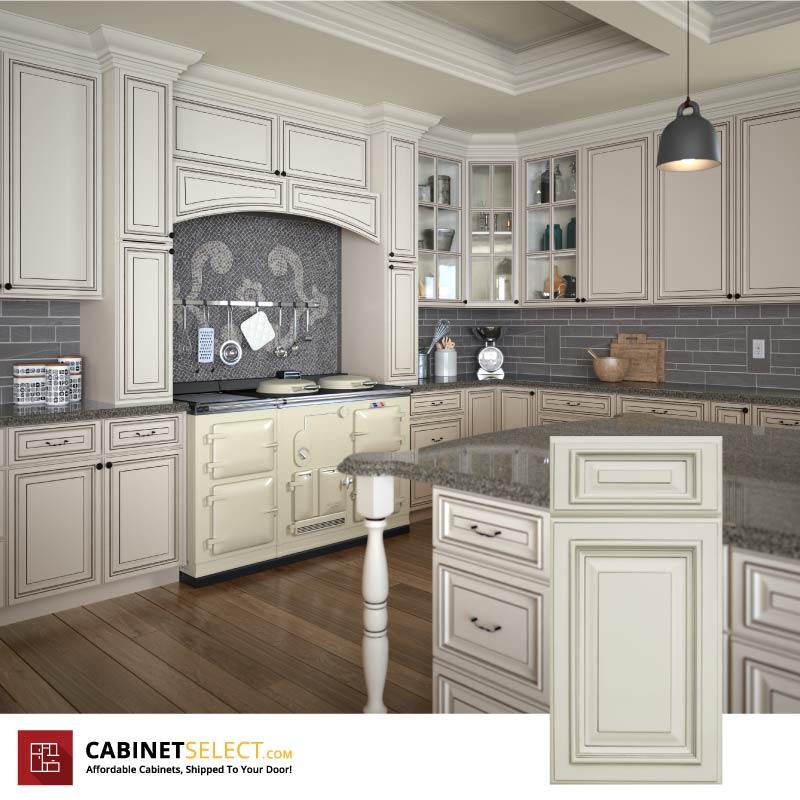
4. GLAZED FINISH
A glazed finish is a decorative option for kitchen cabinets. It involves applying a thin layer of glaze over the base finish, usually a paint or stain, and then wiping off the excess. Glazed finishes can create various effects, such as highlighting, antiquing, or distressing.
Pros:
- Glazed finishes underscore the details of the cabinet surface, like grooves, edges, or moldings.
- They deliver depth and dimension to the cabinet color, giving a high-end, custom aesthetic.
- Applying glazed finishes is relatively affordable and straightforward, only needing a bit of glaze and a rag or brush.
Cons:
- Glazed finishes can darken or dull the base finish, making it less vibrant or appealing.
- Glazed finishes can be difficult to clean, as they may accumulate dirt, dust, or grease in the crevices.
- Glazed finishes can be inconsistent or uneven, varying depending on the application technique and the base finish.
Best Uses
Glazed finishes are perfect for those aiming for a vintage, rustic, or classy kitchen design. They add a hint of character and charm to cabinets. Use white or cream glaze over a dark base finish for an antique appeal. Or use a brown or black glaze over a light base finish for a rich, chic look. Some of the top tier cabinet ranges with Glazed Finish are Signature Pearl, Casselberry Antique White and Townplace Crema cabinet ranges.
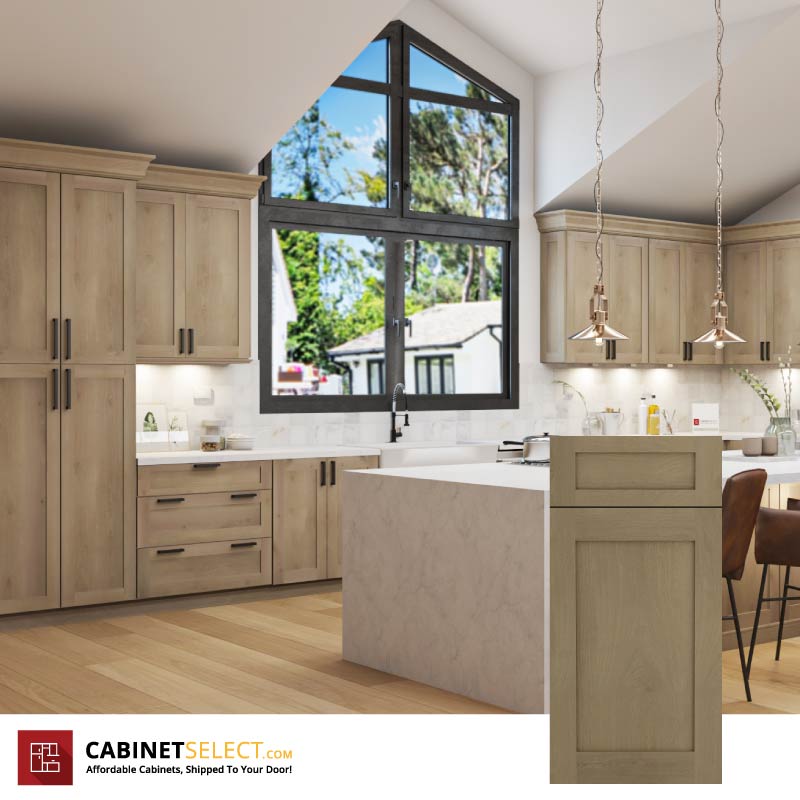
5. NATURAL WOOD FINISH
The natural wood finish is a straightforward, timeless choice for natural beauty lovers. Basically, you are applying a transparent layer of varnish, lacquer, or oil over the natural wood surface, post-sanding and sealing. This kind of finish preserves the wood while enhancing the wood grain and color.
Pros:
- Showcases the intrinsic charm of the wood, offering a warm, organic look.
- Stands the test of time, resisting fading, splitting, and warping.
- Blends beautifully with any kitchen design or color scheme.
Cons:
- The wood’s color and quality limit the look achieved since it doesn’t alter its features.
- Might be a bit difficult to maintain clean since it might soak up stains and grime.
- Results can be unequal, as they might react differently to various wood sections.
Best Uses
Homes with a traditional, rustic, or snug kitchen atmosphere will love the natural wood finish. It illuminates the innate beauty of wood cabinets like oak, maple, or cherry and some of the most loved woods for kitchen cabinets. Amazing cabinet ranges with this finish are Unfinished Shaker cabinet ranges.
Looking For Cabinets For Your Next Project?
Let Us Help You Envision and Price out Your Kitchen or Bathroom Cabinets.Get Free Kitchen Design
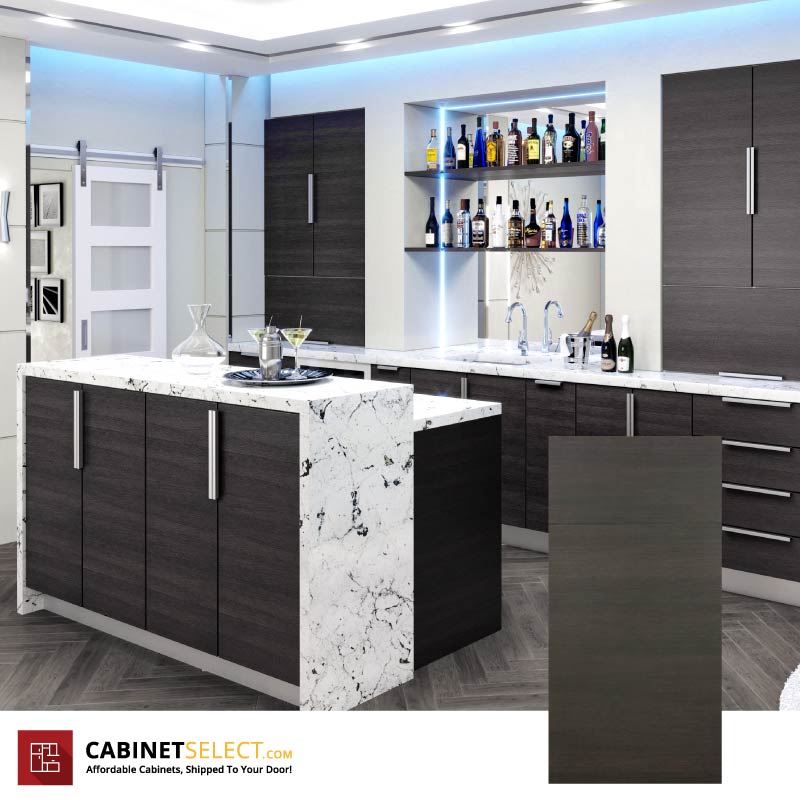
6. VENEER FINISH
A veneer finish is a hybrid option for kitchen cabinets. It involves applying a thin layer of wood or other material over the cabinet surface, usually after gluing and pressing it. Veneer finishes can come in various types, such as wood, laminate, or PVC.
Pros:
- It provides various options and styles, fulfilling any kitchen design dream.
- It is an affordable choice that’s easy to install, using fewer resources than others.
- Keeps up with the hustle and bustle, resisting scratches, stains, and even moisture.
Cons:
- May render an artificial or “cheap” appearance as they might not capture the natural beauty of other finishes.
- Over time, veneer finishes might chip, peel, or bubble, especially in hot or humid zones.
Best Uses
Modern, minimalist, or budget-conscious kitchens would make a fine home for veneer finishes. They’re especially great when you want to experiment with patterns, colors, or textures for your cabinets. Wood veneer for a cozy, close-to-nature vibe, or metal and marble veneer for a sleek and sophisticated touch.
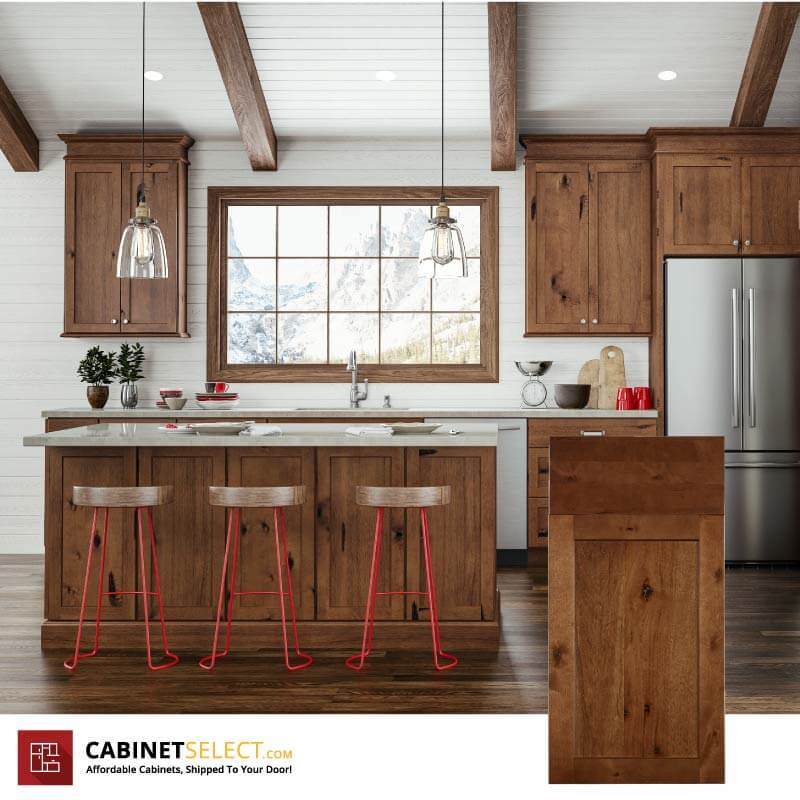
7. DISTRESSED FINISH
For a unique cabinet outlook, a distressed finish is a creative option. It entails applying various techniques, such as sanding or glazing, to get a vintage, weathered look. From antique to shabby chic, distressed finishes provide a range of styles and colors.
Pros:
- Adds a unique appeal and personality to your kitchen with a textured cabinet surface.
- Great for DIY lovers, requiring some simple tools and materials.
- No need to worry about maintenance; dirt and scratches blend into the textured look.
Cons:
- Distressed finishes can look out of place or overdone, as they may not suit every kitchen design or style.
- Can be time-consuming and messy, as they require multiple steps and layers to achieve the desired effect.
- Can be inconsistent or uneven, as they may vary depending on the technique and the cabinet material.
Best Uses
Distressed finishes are well-suited to kitchens with a vintage, rustic, or snug character. They work well to add personality and eccentricity to cabinets. Consider distressed finishes in white, cream, or gray to transform your cabinets into an eye-catching element in your kitchen. Check out our Upton Brown cabinet range.
Looking For Cabinets For Your Next Project?
Let Us Help You Envision and Price out Your Kitchen or Bathroom Cabinets.Get Free Kitchen Design
Kitchen Cabinet Finishes FAQs
Here are some of the most frequently asked questions about kitchen cabinet finishes and their answers.
The best finish is subjective, depending on your budget and preferences. However, here are some tips:
- Painted finish: Offers a wide array of options and styles.
- Stained wood finish: Emphasizes a natural, warm look.
- Laminate finish: Durable and cost-effective.
- Glazed finish: Decorative and refined.
- Natural wood finish: Classic simplicity.
- Veneer finish: Modern and minimalist aesthetics.
- UV finish: Appears contemporary and resilient.
- Distressed finish: Personalized, unique character.
Consider your kitchen’s size, layout, and other factors. General tips include:
- Small or dark kitchen: Use a light or bright color.
- Large or bright kitchen: A dark or bold color adds coziness.
- Neutral or monochrome kitchen: Contrasting or accent colors add vibrancy.
- Colorful or eclectic kitchen: Coordinating or complementary colors ensure harmony.
Yes, choose quality paint suitable for kitchens, pick a finish that matches your style, and ensure proper preparation for a great outcome.
It’s a personal and budget decision. Painting both sides ensures a professional look and extra protection, but it doubles the workload and limits style options for the interior.
It’s clear that picking the right finish for your kitchen cabinets isn’t a walk in the park; there are countless options and things to consider. But using this guide as your trusty companion, you can filter through the choices and find your kitchen’s perfect match.
The perfect finish should work with your budget, preferences, kitchen design, and cabinet material. Beyond just practicality, it should echo your personality and aesthetic, boosting the charm of your kitchen.
If you need more help or inspiration, feel free to explore more on CabinetSelect.com, where you can find a wide range of kitchen cabinet finishes, styles, and designs. You can also contact us for any questions or inquiries; we will gladly assist you.
We hope you enjoyed this guide and learned something new about kitchen cabinet finishes. Thank you for reading, and happy kitchen remodeling!
